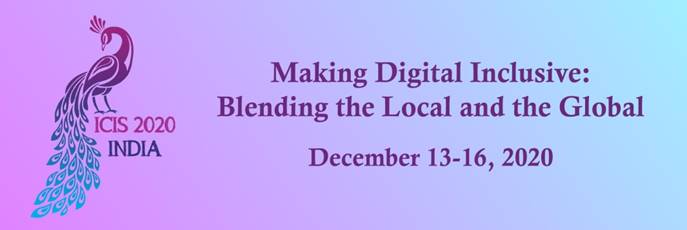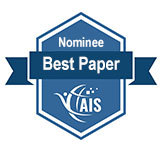IoT and the Smart Connected World
Loading...
Paper Type
Complete
Paper Number
2557
Description
The development of digital product platforms is a prevailing trend in many industries. As firms incorporate digital technologies into established product categories, they need to manage tensions on multiple organizational layers including strategy, technology and structure. Recent findings suggest that tensions are most likely to be managed by creating resource and coordination flexibility. This paper reports a longitudinal case study of developing a digital product platform. By drawing on organizational ambidexterity theory, we identify four mechanisms—re-scripting, centralizing-re-directing and decoupling—through which the firm creates resource and coordination flexibility. The resulting resource and coordination flexibility in turn lead to the transformation of the firm’s strategy, technology and internal structure. The contribution of this study is in adopting an internal perspective and a bottom-up approach which help to theorize the evolution of digitized products into digital product platforms in an emergent way.
Recommended Citation
Shahlaei, Charlotte Arghavan and Kazan, Erol, "Digitizing Products towards Platforms: the Case of Vehicle Motion System" (2020). ICIS 2020 Proceedings. 8.
https://aisel.aisnet.org/icis2020/iot_smart/iot_smart/8
Digitizing Products towards Platforms: the Case of Vehicle Motion System
The development of digital product platforms is a prevailing trend in many industries. As firms incorporate digital technologies into established product categories, they need to manage tensions on multiple organizational layers including strategy, technology and structure. Recent findings suggest that tensions are most likely to be managed by creating resource and coordination flexibility. This paper reports a longitudinal case study of developing a digital product platform. By drawing on organizational ambidexterity theory, we identify four mechanisms—re-scripting, centralizing-re-directing and decoupling—through which the firm creates resource and coordination flexibility. The resulting resource and coordination flexibility in turn lead to the transformation of the firm’s strategy, technology and internal structure. The contribution of this study is in adopting an internal perspective and a bottom-up approach which help to theorize the evolution of digitized products into digital product platforms in an emergent way.
When commenting on articles, please be friendly, welcoming, respectful and abide by the AIS eLibrary Discussion Thread Code of Conduct posted here.



